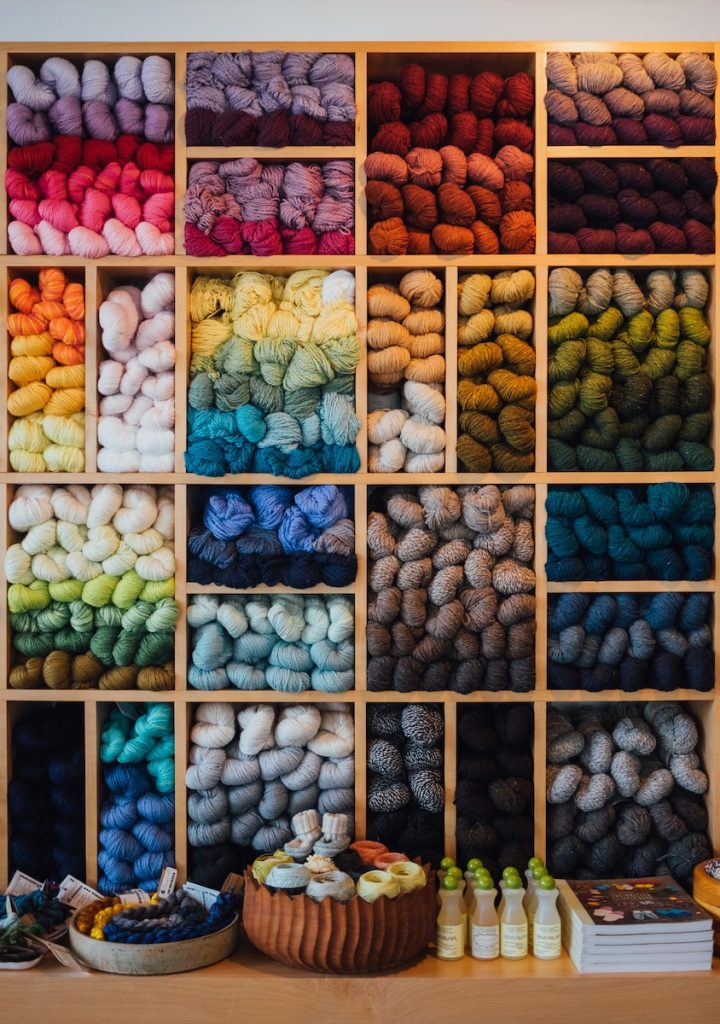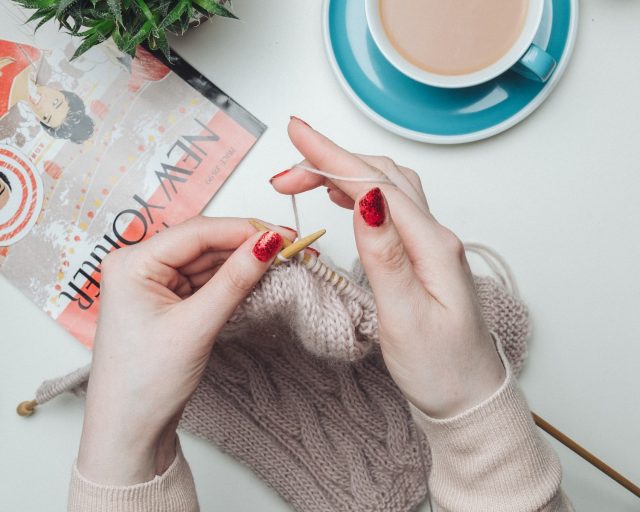Welcome to the knitting world, a creative and calming pastime enjoyed for centuries. Whether you are looking for a way to unwind after a long day or want to learn a new skill, knitting can provide a sense of relaxation and accomplishment. In this beginner’s guide, we will explore the basics of knitting and how it can help to reduce stress, increase mindfulness, and improve mental health. From selecting materials and tools to mastering simple stitches, we will cover everything you need to start your knitting journey. So grab some yarn and needles, and let’s dive into the knitting world for relaxation.
Benefits of Knitting
Knitting is not just a fun and creative hobby but also provides a wide range of benefits for both the mind and body. Here are some of the key benefits of knitting:
- Reduces Stress and Anxiety – Knitting has been shown to have a calming effect on the mind, similar to meditation. It can help reduce stress and anxiety, lower blood pressure, and promote relaxation.
- Improves Focus and Concentration – Knitting requires concentration and focus, which can help to improve cognitive function and memory. It can also provide a sense of accomplishment as you complete each stitch or project.
- Increases Mindfulness – Knitting is a form of mindfulness practice that can help to improve self-awareness and increase feelings of mindfulness. It can also promote a sense of gratitude and appreciation for the present moment.
- Enhances Creativity – Knitting allows you to express your creativity and imagination by choosing colors, patterns, and designs. It can also help to improve problem-solving skills as you work to figure out how to create the desired shape or texture.
- Provides a Sense of Community – Knitting can be a social activity, providing a sense of connection and belonging with others who share the same hobby. It can also be a way to give back to the community by creating handmade items for charity or gifts for loved ones.
Overall, knitting is a wonderful hobby that provides both physical and mental health benefits. It is a great way to relax, unwind, and improve your overall well-being. So why not give it a try and see how it can positively impact your life?
Supplies Needed
Before you begin knitting, it is important to gather the necessary supplies. Here are the basic supplies needed to get started:
- Yarn – Yarn is the most important material in knitting. Choose a yarn that is appropriate for your skill level and project. Some popular yarns for beginners include acrylic and wool blends.
- Knitting Needles – Knitting needles come in various sizes and materials. Starting with a medium size, about 8-9 inches long, is recommended for beginners. Bamboo or wooden needles are also good for beginners as they are lightweight and easy to handle.
- Scissors – A good pair of scissors is needed to cut the yarn. It is best to have a designated pair of scissors for knitting.
- Tape Measure – A tape measure is used to measure the length of the project and ensure it is the correct size.
- Stitch Markers – Stitch markers are used to mark the beginning and end of a row or to mark a certain pattern in the project.
- Yarn Needle – A yarn needle is used to weave in the yarn’s ends and sew pieces of the project together.
- Pattern – A pattern is the instructions for the project. Choose a pattern appropriate for your skill level and desired project.
These are the basic supplies needed to get started with knitting. As you progress, you may find that you need additional supplies, such as a stitch counter or blocking mats. Remember always to use high-quality materials to ensure the best results for your projects.
Choosing Yarns

Choosing the right yarn for your knitting project can make all the difference in the final result. Here are some factors to consider when choosing yarn:
- Fiber Content – Yarn comes in various fiber contents such as wool, cotton, acrylic, silk, and more. Each fiber has its properties, such as warmth, softness, drape, and stretch, which will affect the look and feel of the finished project.
- Weight – Yarn also comes in different weights, ranging from lace to super bulky. The weight of the yarn will determine the thickness of the finished project.
- Color – Consider the color of the yarn and how it will affect the project’s overall look. Bright colors or bold patterns may be best for accessories, while neutral colors may be better for garments.
- Texture – Yarn can have a smooth or textured surface, which will affect the appearance and feel of the finished project. Consider the texture of the yarn and how it will complement the pattern and style of the project.
- Price – The yarn price can vary greatly depending on the fiber content, weight, and brand. Consider your budget and how much yarn you will need for the project.
- Availability – Yarns come in various brands and can be purchased online or in stores. Consider the availability of the yarn and how quickly you need it for your project.
When choosing yarn, reading the label and following the recommended gauge and care instructions are essential. Swatching the yarn before beginning the project can also help ensure the project has the desired look and feel. Remember, the right yarn can make all the difference in the final result of your knitting project.
Learning the Basics
Learning the basics of knitting is essential for anyone who wants to take up this relaxing and rewarding hobby. Here are the basic steps to get you started:
- Casting On – This is the first step in starting a project. It involves creating a foundation row of stitches on the needle. There are various casting on methods, such as the long-tail cast-on or the knitted cast-on.
- Knit Stitch – The knit stitch is the most basic stitch in knitting. It involves inserting the right-hand needle into the front of the stitch on the left-hand needle, wrapping the yarn around the right-hand needle, and pulling the new stitch through.
- Purl Stitch – The purl stitch is another basic stitch in knitting. It involves inserting the right-hand needle into the back of the stitch on the left-hand needle, wrapping the yarn around the right-hand needle, and pulling the new stitch through.
- Binding-Off – This is the final step in finishing a project. It involves removing the stitches from the needle and creating a finished edge. Various binding-off methods exist, such as the basic bind-off or the stretchy bind-off.
- Reading Patterns – Knitting patterns provide instructions on how to create a specific project. Learning how to read patterns is essential for understanding the stitches, yarns, and techniques required for the project.
Practice is key when learning the basics of knitting. It is important to start with simple projects, such as scarves or dishcloths, and to focus on mastering the basic stitches before moving on to more complex patterns. Many online resources and tutorials are available to help beginners learn the basics of knitting. With time and patience, anyone can become proficient in this relaxing and rewarding hobby.
Trouble Shooting Tips
Knitting can be a relaxing and enjoyable hobby, but it is not without its challenges. Here are some common troubleshooting tips to help you overcome common knitting problems:
- Tension Problems – Uneven tension is a common problem when starting out with knitting. The key to achieving even tension is practicing and maintaining consistent tension throughout the project. If your tension is too loose or tight, adjust the tension of your yarn or needle size accordingly.
- Dropped Stitches – A dropped stitch occurs when a stitch falls off the needle. This can happen when you accidentally pull on a stitch or when the yarn is not secured properly. To fix a dropped stitch, carefully insert the needle back into the stitch and pull it through to the correct side.
- Twisted Stitches – A twisted stitch occurs when the stitch is twisted on the needle. This can happen when you accidentally wrap the yarn the wrong way around the needle. To fix a twisted stitch, carefully slip it off the needle and insert it back onto the needle in the correct orientation.
- Yarn Tangles can occur when the yarn becomes twisted or knotted. To avoid tangles, make sure to unwind the yarn properly before starting your project. If you do encounter a tangle, gently pull the knots apart and try to untangle the yarn without creating more knots.
- Reading Patterns – Reading knitting patterns can be challenging, especially for beginners. To avoid confusion, read the pattern carefully before starting and make sure to understand the abbreviations and symbols used. If you are still unsure, consult online resources or a knitting expert for clarification.
- Making Mistakes – Everyone makes mistakes when knitting. The key is not to get discouraged and to learn from your mistakes. If you notice a mistake in your project, carefully rip back to the point where the mistake occurred and start again.
Remember, practice makes perfect, so don’t give up and keep on knitting!
Conclusion
Knitting is a wonderful hobby that provides numerous benefits, including relaxation, creativity, and a sense of accomplishment. Learning the basics of knitting, including casting on, knit and purl stitches, binding off, and reading patterns, is essential for anyone interested in taking up this hobby. While there may be some challenges along the way, such as tension problems, dropped stitches, twisted stitches, and yarn tangles, there are troubleshooting tips that can help you overcome these obstacles. With practice and patience, anyone can become proficient in knitting and create beautiful handmade projects. So grab your needles and yarn and start knitting – you won’t regret it!






























